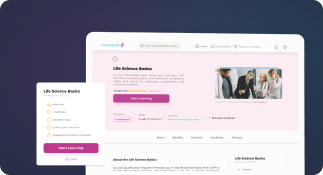Pharmaceutical Marketing
Definition
Pharmaceutical marketing, also known as pharma marketing or drug marketing, refers to the strategies and practices used by companies to promote prescription drugs, over-the-counter (OTC) medications, and healthcare products to various stakeholders including healthcare professionals (HCPs), patients, payers, and regulators. It encompasses both direct-to-consumer (DTC) and business-to-business (B2B) marketing within a highly regulated environment.
Detailed Explanation
Purpose and Importance of Pharmaceutical Marketing
The primary goal of pharmaceutical marketing is to ensure that relevant stakeholders are informed about the benefits, risks, and appropriate use of medical products. This is vital for improving public health outcomes, driving product adoption, and ensuring commercial success. Unlike traditional consumer marketing, pharma marketing operates under strict regulatory oversight to ensure ethical standards and patient safety.
Key Channels and Strategies
Pharmaceutical marketing strategies vary depending on the target audience. Common channels include:
- Direct-to-Consumer (DTC) Advertising: Includes TV, print, and digital ads aimed at educating patients about treatment options. This is primarily allowed in the United States and New Zealand.
- Healthcare Professional (HCP) Engagement: Involves detailing, medical conferences, educational webinars, and sample distribution to inform prescribers about new therapies.
- Digital Marketing: Websites, social media, SEO, email campaigns, and mobile apps are increasingly used to reach both HCPs and patients.
- Patient Support Programs: Services such as adherence support, co-pay assistance, and disease education to improve patient outcomes.
- Market Access and Payer Marketing: Communicating value propositions and health economic data to insurance providers and government payers.
Regulatory Considerations
Pharmaceutical marketing is subject to rigorous regulations to ensure that promotional materials are truthful, balanced, and not misleading. Key regulatory bodies include:
- FDA (U.S. Food and Drug Administration): Oversees drug advertising and labeling in the U.S.
- EMA (European Medicines Agency): Regulates promotional practices in the EU.
- PhRMA Code: Provides voluntary industry guidelines for ethical interactions with HCPs in the U.S.
- ABPI Code (UK): Sets standards for marketing in the UK pharmaceutical industry.
Trends in Pharmaceutical Marketing
The pharmaceutical marketing landscape is evolving rapidly due to digital transformation, patient empowerment, and value-based care models. Key trends include:
- Personalized Marketing: Leveraging data analytics and AI to tailor messaging to individual stakeholder needs.
- Omnichannel Engagement: Integrating multiple touchpoints (email, social, webinars, in-person) for seamless stakeholder interaction.
- Patient-Centric Models: Shifting focus from product promotion to patient outcomes and education.
- Compliance-Driven Content: Ensuring all promotional content aligns with medical, legal, and regulatory standards (MLR review).
Examples and Context
For example, a pharmaceutical company launching a new cardiovascular drug may deploy a multi-channel strategy involving:
- Publishing peer-reviewed clinical trial data in medical journals.
- Hosting webinars for cardiologists and primary care physicians.
- Running targeted digital ads for patients with high cholesterol.
- Offering a patient assistance program to improve adherence and access.
These efforts must be coordinated with internal regulatory affairs, legal, and medical affairs teams to ensure compliance and accuracy.



